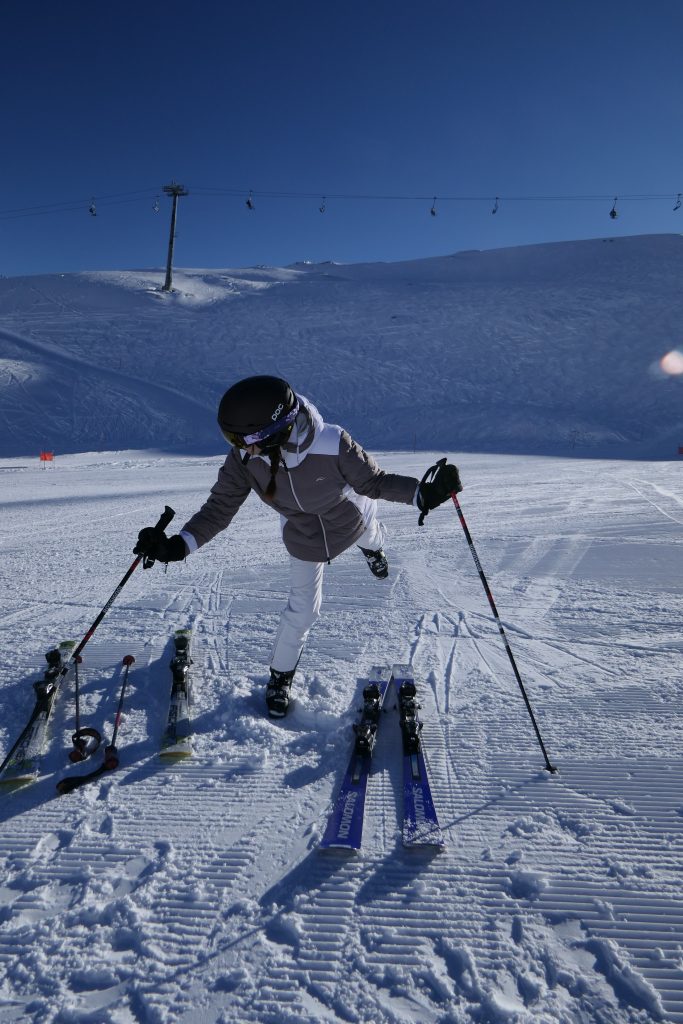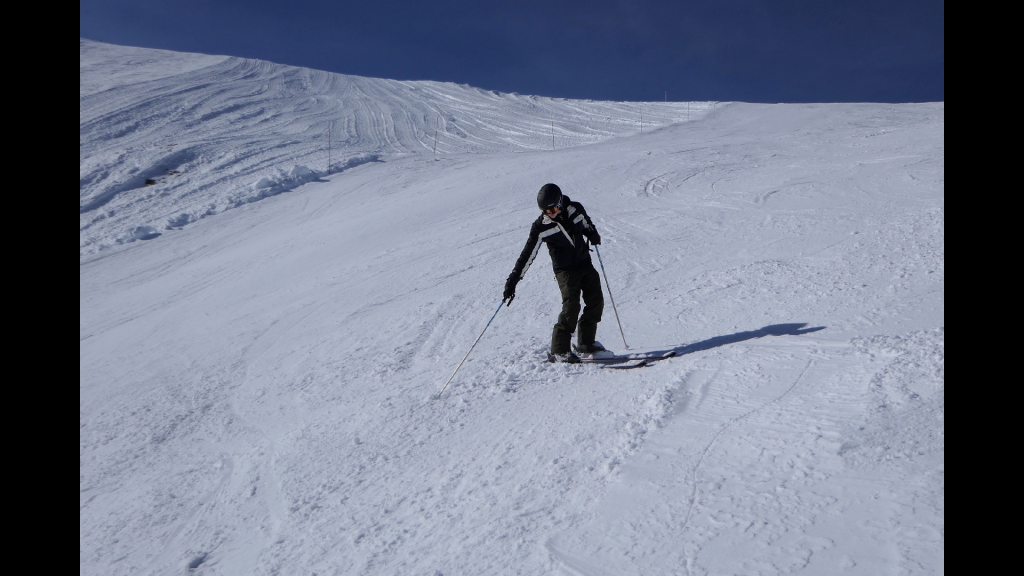- Eco Mode
- Body Management/Hip Angulation
- Forward Pressure/Stopping Hip Rotation
- Carving Intro
Eco Mode
Completing the turns using the outside/downhill ski to lift the body up and out of the end of the turns. This is effective in using the energy built up during the turn and so is less tiring than using leg retraction followed by a push from the uphill leg.
It’s necessary to be able to complete turns with different movements patterns – the full range goes from leg retraction, just letting the ski lift the body up and out of the turn on the straight outside leg to literally jumping up. (We haven’t looked at leg retraction or jumping yet)
Economy Mode is using the ski to lift you out of each turn – but it makes getting from edge to edge slower.
Body Management (Hip Angulation)
Take a look at the two Olympic champion skiers in the photograph below.
Killy’s image from the 1960s has his chest facing downhill whereas Noel’s image from 2022 has his chest facing forward. What Killy is doing destroys your lower back and is probably why he never went on skis again after he stopped racing.

Protecting the Spine
- Hold the front of the pelvis up – aiming for “neutral pelvis”
- During the turn pull the outer hip backwards so that the ski doesn’t pull it in front of your ribs
- Look for a stretch between the ribs and hip joint
- Look for a reflex contraction of the lower abdominals – the postural reflex
- Keep the shoulders/chest following the skis (to some degree)
- Always “counter turn” the pelvis more than the chest/shoulders (It’s only the pelvis that should “face downhill”)
- Pulling the hip backwards also prevents both hip rotation and full upper body rotation
Source of Hip Angulation
The upper body needs to tilt forward over one hip joint – then rotate around it. This is in addition to pulling back the outside hip etc.
The body shape produced alters the location of the centre of mass enabling pressure on the ski fronts and also greater agility both into and out of turns – and pole planting if the skis are swinging laterally.
The hip angulation also provides flexion of the hip joint that gives absorption of shocks. Increased angulation also increases the edge angle of the skis to the snow and may alter the turn radius and grip.
Angulation when upright and pivoting has another function – when ANTICIPATING the next turn it is used to get the Centre of Mass out of the existing turn (by tilting the torso forward at the hip ) and letting the Centre of Mass move over the skis to plant the ski pole downhill for a strong, clear and definite support.

When the entire body inclines into the turn with hip angulation present this below is what it looks like.


Carving Intro
We had a brief introduction to “carving” – on a gentle gradient one ski held out to the side on edge and pulling it inwards towards the body with the adductor muscles. This causes that ski to carve an arc cleanly when travelling forward. We’ll look at this in more depth next time if conditions are suitable.
